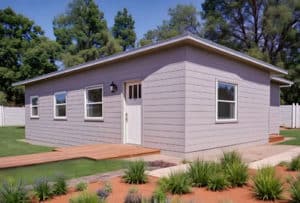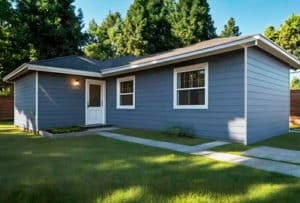





A link to download your FREE brochure will be in your inbox in 3 minutes



















The final price may vary based on project specifics.
To get a free accurate quote tailored to your needs, book a consultation with us today!

The price per square foot provided is an average and may vary depending on project-specific details such as materials, location, complexity, and other factors. Actual costs may differ from the average provided.
It is recommended to obtain a detailed quote based on the specific requirements of your project.

Please note that the monthly payment displayed on this page is an estimate and is subject to variation based on the selected loan product, applicants credit score, loan amount, and other financial details. Actual monthly payment may differ from the estimate provided.
It is recommended to seek advice from a financial advisor or loan officer to obtain precise payment information tailored to individual circumstances.
 Your Trusted
Local Contractor
Your Trusted
Local Contractor

Why are modular and manufactured homes slowly but surely gaining popularity? If you imagined aesthetically unpleasing homes with subpar quality, then it’s no wonder you asked this question.
Stick-built is a traditional construction method where builders create an ADU on-site. The word “sticks” refers to components that they use for framing: wooden, metal, or steel frame bars. ADU builders make and assemble each component (walls, roof, flooring, etc.) on the construction site before raising and connecting them together.
Modular construction, on the other hand, presumes building components off-site in a manufacturing facility. Next, ADU builders transport them to the construction site and assemble modular units from ready-made components.
While a stick-built home requires full construction on site, prefabricated houses assembled on site need way less construction work. Yet, there’s still some difference between them.
Prefab homes come in the following models:
A modular home is a structure that necessitates minimal assembly. Built-in the controlled environment of a factory, their sections or modules come to your land almost fully ready. These modules contain specific portions of a home, like rooms or segments of rooms, which you can assemble in different combinations to create a variety of layouts. The builders do the bulk of the building process for modular homes off-site, limiting the amount of work to the bare minimum. Modular homes follow the same building codes as site-built homes.
These consist of factory-built walls and roofs. They need more construction than modular houses but still less than site-built homes. They require piece-by-piece construction, but thanks to pre-made panels, it takes less time than from scratch building.
Not fully constructed in a factory, these homes only involve the pre-cutting of lumber or other building materials off-site. This results in less waste and debris on your property left from the construction process.
When looking at the difference between these types of pre-manufactured homes, we compare the amount of work carried out off-site. In the section below, we’ll discuss the advantages of such prefab project types as modular construction.
So, what exactly makes modular buildings so efficient in comparison to traditional stick-built homes? Undoubtedly, the traditional method (site-built construction) also has its advantages, such as the possibility to customize the design and layout for unique property needs.
However, unlike a site-built home, a modular home may offer such perks as:
If most of the job is complete, modular homes cannot demand the same amount of time as their stick-built counterparts. That’s thanks to standardization and the fact that site work and module production can occur concurrently. Thus, if your top priority is speed, in certain cases, modular-built homes may take a few days for their physical assembly, while stick-built homes require months until full completion.
Opportunity to save money is one of the main points for consideration when it comes to making the most informed decision. Since factory-built homes are constructed in a fabric setting, the process of their building is smooth and well-organized, leading to efficient use of materials and labor. All of these reduce the overall cost.
One of the challenges with stick-built construction is weather delays. That’s where modular construction goes significantly ahead of stick-built home building, as it doesn’t at all depend on frolics of the environment. Shielded by factory walls and roofs indoors, components of manufactured homes are safe from unintended pouring and curing, extreme temperatures, and other reasons to put off work.
Each modular home undergoes rigorous quality checks to meet quality building criteria, safety standards, and local codes. In a factory setting, it’s easier to implement these quality checks that spur general contractors to ensure even more high-quality output than with other houses.
Modular construction homes frequently come with good insulation, high-performance windows, advanced HVAC systems, energy-efficient appliances, and lighting fixtures. In the long term, this leads to lower energy costs and a positive effect on the environment.
It’s well known that site-built homes cause enough property disturbances, such as waste from building materials, excessive noises, or unpleasant odors. Also, if you constantly live in the main house, experiencing this for several months, like with stick-built construction, may become quite the ordeal. Modular homes, even though using the same materials, do not trash the surroundings, as the most messy work takes place at the factory.
It’s true that a modular project offers less versatility than a custom build. However, modular construction still allows for a whole range of design solutions for different tastes and requirements. Since modular homes have segments, you can compose them in any layout you prefer, and they can fit into your yard. Customized floor plans, various finishes, and personalized features are all of these you can incorporate into your ADU project.
When comparing modular construction and stick-built construction, homeowners need to take several factors into account. Yet, if you’re looking for a quick and budget-friendly housing solution, a modular home project may be a perfect fit for you!

Even though we mostly discuss modular construction in frames of ADUs, these homes are adaptable not only for urban and rural but also for industrial and commercial buildings, providing plenty of flexibility in their use. In fact, this only proves that modular techniques have turned out to be viable solutions for any type of project.
Since modular construction allows you to choose blocks (modules) and combine them at your discretion, you can create a unique layout for a sloped plot, a plot with uneven terrain, or even a plot with specific constraints like wetlands, seismic zones, etc.
Have you wondered if the cheaper cost for modular construction has something to do with poor quality? Or that you cannot choose the design and style you like and have to limit yourself to mobile homes (RV homes)?
Surely, it’s hard to believe that significant cost savings would not be at the expense of living comfort or material quality. However, delving into the underlying reasons is crucial. Firstly, modular construction is more cost-effective than traditional construction because of the assembly line approach. If on-site construction is always a distinct and variable process, manufacturing on an assembly line is a standardized and streamlined process as each module follows precise specifications.
This method of building reduces waste, eliminates the need for engineering, and fosters efficient use of labor and materials, which affects the final construction materials and labor costs.
Also, stick-built construction and modular construction follow all the same codes, which makes it impossible to reduce the quality of building. Otherwise, these constructions won’t receive city approval.
All in all, the difference between stick-built home construction and modular building is process efficiency achievable in controlled environments with constant supervision, resulting in a reduction of cost overruns.
Stick-built construction indeed has its advantages, but it also features a lengthy process and pretty high costs in comparison with modular homes. An on-site built home suggests more customization options due to the process of work involved in creating a house from scratch, including drawings and an individual style where you choose every detail. Assembled homes still offer some customization as well, and a lack of engineering and architecture from scratch makes them way less costly.
If you look at a house, you might, at the same rate, take a manufactured house for a stick-built one. That’s because there’s no difference in the quality of finishes. Moreover, pre-manufactured homes may be even more consistent in their quality than their stick-built components. However, there are ways to tell them apart. For instance, modular homes usually sit on permanent block or pier foundations and have more standard roofs than stick-built ones.
Yes, since you can prepare the site and order manufacture of modular homes at once, you spare quite a lot of time. Besides, the controlled environment of a factory brings forth a more efficient and predictable construction process not prone to weather delays or other adverse environmental conditions.
Yes, you need preliminary foundation work for a modular house. You require it to provide stability and support for your new modular unit, securing the durability and integrity of the modular structure. Although it may be different for specific jurisdictions, in most cases you need to install a permanent foundation, such as a concrete slab with a crawl space or basement.
Get a First Look at Real ADU Projects